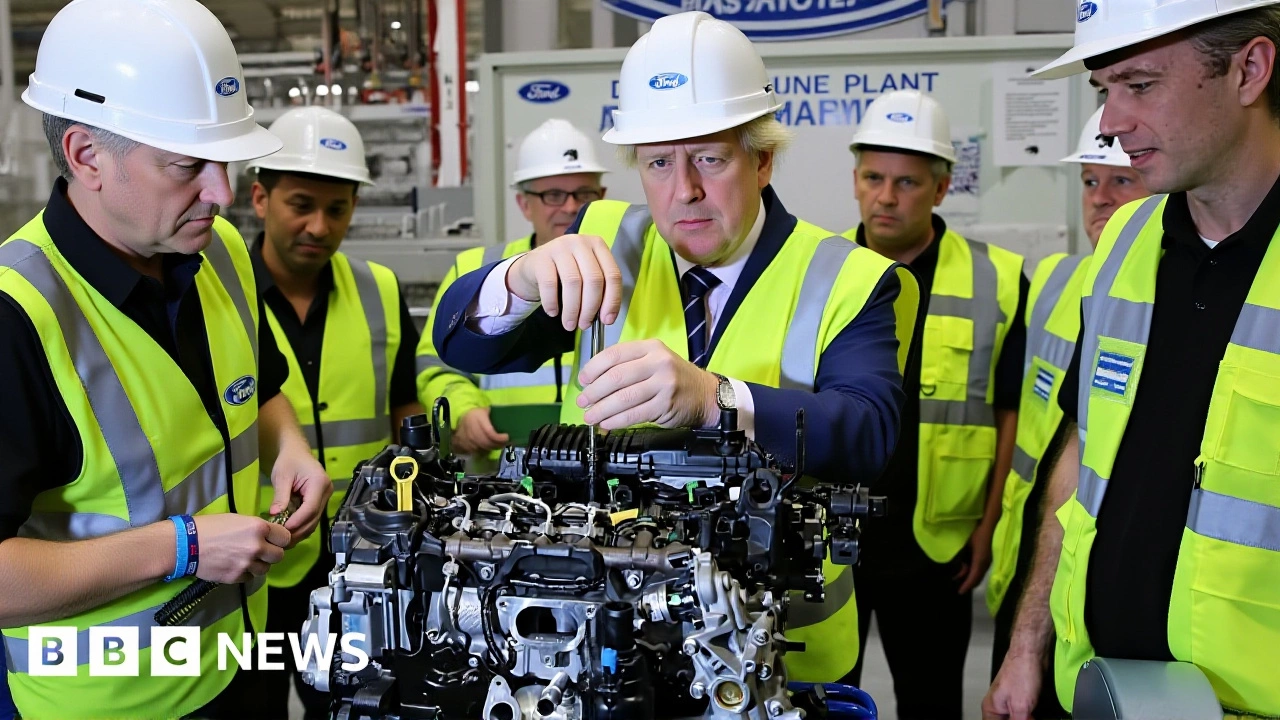On January 13, 2025, Prime Minister Sir Keir Starmer stood at the podium in 10 Downing Street and declared Britain’s next great industrial push — not in steel or ships, but in silicon and algorithms. With a crisp, unflinching tone, he announced a £14 billion private investment commitment to accelerate artificial intelligence across the UK, backed by 13,250 new tech jobs and the full adoption of 50 recommendations from Matt Clifford’s AI Opportunities Action Plan. This wasn’t just another tech policy. It was a pivot — a deliberate, high-stakes bet that AI could become the engine of national renewal.
From Speech to Strategy: The Blueprint Unveiled
Starmer didn’t just talk about AI. He mapped it. The plan targets three critical areas: public service efficiency, small business support, and infrastructure acceleration. Teachers, he said, will use AI to personalize lessons. Small shops will automate record-keeping. Planning applications — long mired in bureaucracy — will be processed in days, not months. The Department for Science, Innovation and Technology (DSIT) is now the operational hub, with a dedicated hotline and email line open for inquiries. The message was clear: this isn’t theoretical. It’s being built now. The £14 billion in private commitments didn’t materialize out of thin air. It followed months of quiet lobbying by government officials, including visits to tech hubs like the Google AI Campus in Holborn, where Starmer first declared economic growth as his government’s “number one mission” in November 2024. That campus, located in his own parliamentary constituency, already hosts a teacher training initiative co-developed with the Raspberry Pi Foundation and Google DeepMind, aiming to reach 250,000 additional pupils by the end of 2026.Who’s Building It? The Corporate Players
This isn’t a government-only show. Starmer named names. Wave is developing autonomous vehicle tech. Synthesia, the AI video pioneer, is expanding its UK footprint. And Blackstone — yes, the global private equity giant — is constructing Europe’s largest data center in Northumberland. These aren’t symbolic gestures. They’re anchors. The government is creating “AI Growth Zones” to fast-track infrastructure. One confirmed location? The “Colum” site in Oxfordshire. These zones will bypass traditional planning delays — a direct response to industry complaints that Britain’s red tape is stifling innovation. “We’re not just attracting AI,” Starmer said. “We’re building the best place to scale it.”
The Economic Calculus: Growth, Not Just Tech
The real headline isn’t the £14 billion. It’s the £400 billion. That’s the estimated economic potential the government claims AI could unlock over the next decade — an amount roughly equivalent to 15% of the UK’s current GDP. Starmer tied every policy decision back to growth. “This is not about gadgets,” he told reporters. “It’s about wages, productivity, and competitiveness.” Chancellor Rachel Jane Reeves is the silent architect behind the fiscal side. Her upcoming Budget Statement on November 24, 2025, will be the moment this vision becomes law — through tax incentives, R&D credits, and infrastructure spending. The Hansard Society has confirmed the statement will include “the Government’s taxation plans and its assessment of the wider state of the economy.” That’s the bridge between ambition and accounting.What About the Workers? The Unspoken Question
It’s the elephant in the room. When ITV’s Robert Peston pressed Starmer on job losses — “In all industrial revolutions, some people’s pay is flattened, others lose their jobs” — the Prime Minister didn’t dodge. But he didn’t answer either. The transcript ends there. That silence speaks volumes. The government’s official line is that AI will free up public sector staff from admin work so they can focus on frontline services. That’s true — but incomplete. What happens to the clerks, the data entry staff, the call center workers whose roles are automated? The plan mentions “reskilling” in passing. No timeline. No funding figures. No national strategy. Critics say this is the biggest risk: building a tech powerhouse while leaving millions behind.
What’s Next? The Road to November 2025
The next 10 months are critical. DSIT must finalize the AI Growth Zone criteria. The £14 billion in private commitments need verification — are they new money, or repackaged existing investments? And crucially, the government must prove it can deliver on its promise of “responsible AI.” There’s precedent. The UK once led in fintech. Then regulation caught up, and talent fled to Singapore and Berlin. This time, Starmer’s team insists they’ve learned from that mistake. But history doesn’t forgive half-measures. The world is watching. China is pouring $150 billion into AI. The EU has its own regulatory framework. The U.S. is racing ahead with defense and private sector synergy. The UK’s window isn’t closed — but it’s narrowing. Starmer’s plan is bold. It’s detailed. And it’s only as good as its execution.Frequently Asked Questions
How will the £14 billion in private investment be verified?
The Department for Science, Innovation and Technology will require participating firms to submit audited investment commitments by March 2025, with quarterly public disclosures. The Office for National Statistics will independently validate the figures. Only funds committed after January 13, 2025, and tied to UK-based AI infrastructure or job creation will count toward the £14 billion target.
Which sectors stand to gain the most from this AI push?
Healthcare, education, and public administration are the top beneficiaries. AI tools for diagnostics, personalized learning, and automated planning applications are already being piloted. But manufacturing and logistics are also expected to see major efficiency gains, especially with companies like Wave and Blackstone expanding operations. The government estimates 60% of the 13,250 new jobs will be in engineering, data science, and AI ethics roles.
Why is Northumberland chosen for Europe’s largest data center?
Blackstone selected Northumberland for its low energy costs, cool climate (reducing cooling needs), and proximity to undersea fiber cables connecting to Europe. The site also benefits from existing renewable energy infrastructure, aligning with the government’s net-zero goals. It’s a strategic move — turning a historically industrial decline zone into a tech hub.
What’s the connection between the Google AI Campus and Starmer’s constituency?
The Google AI Campus is located in Holborn and St Pancras — part of Sir Keir Starmer’s parliamentary constituency of Holborn and St Pancras. His visible support for the initiative, including co-hosting events and promoting its teacher training program, has drawn both praise for local investment and criticism for perceived favoritism. The government insists the program is nationally scalable, with plans to replicate it in six other regions by 2026.
How does this plan compare to previous UK government AI strategies?
The 2017 AI Sector Deal under Theresa May was largely advisory, with no binding investment targets. Starmer’s plan is the first to tie AI directly to job creation, infrastructure spending, and private capital mobilization. It also adopts all 50 recommendations from Matt Clifford’s report — a level of implementation unseen since the 2000s digital economy push. The difference? This time, there’s a budget, a timeline, and a chancellor ready to legislate it.
What happens if the £400 billion economic potential doesn’t materialize?
The government has built in a review mechanism: an independent panel led by the Office for Budget Responsibility will assess progress every 18 months. If targets are missed by more than 20%, the Chancellor must present a revised plan to Parliament. There’s no automatic penalty, but political fallout would be severe — especially with the next general election due by January 2029. The £400 billion figure is a projection, not a guarantee. It’s the benchmark they’re betting their legacy on.



